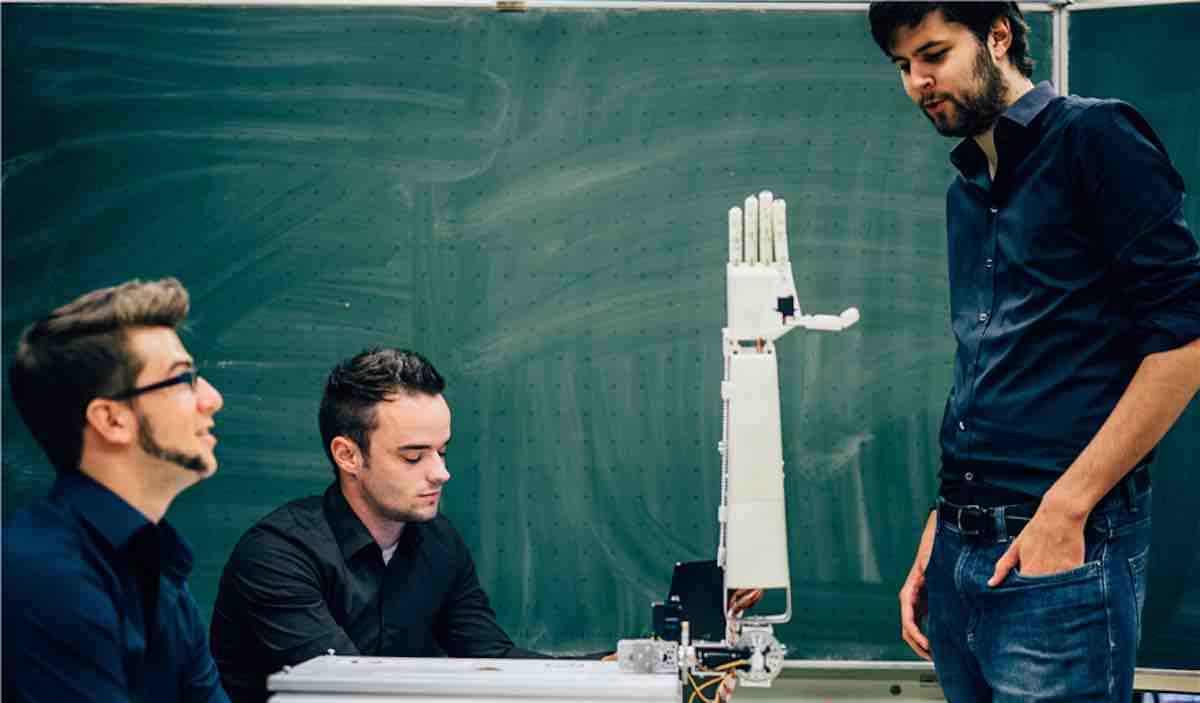These engineering students noticed a significant shortage of sign language interpreters in the world – which is why they created a robotic arm to lend a hand.
“Project Aslan” is a user-friendly and low-cost humanoid robot that translates speech into sign language.
Aslan, which is an acronym for “Antwerp’s Sign Language Actuating Node” was designed by three students at the University of Antwerp who wanted to “to reduce the communication barrier between the hearing and the deaf community.”
“Because of his innovative design, Aslan stays affordable, without losing durability,” says the students. “The use of 3D-printing technology makes it possible to cut the production costs, as well as carrying out modifications or repairs when necessary.”
WATCH: Guy Shows How You Can Now Use Amazon Prime to Instantly Help the Homeless
Robotics teacher Erwin Smet says: “A deaf person who needs to appear in court, a deaf person following a lesson in a classroom somewhere. These are all circumstances where a deaf person needs a sign language interpreter, but where often such an interpreter is not readily available. This is where a low-cost option, like Aslan can offer a solution.”
Since the parts are all 3D-printed, Project Aslan can be manufactured and assembled in over 140 countries that have access to the technology.
RELATED: Because His AirBnb Guest Had a Heart Attack, Man’s Ingenuity is Now Saving Thousands of Lives
The team is currently working on creating a second robotic arm to work with the first, as well as an expressive face that can help convey meaning. Additionally, the students are exploring the possibilities of connecting a webcam to Project Aslan so users can teach the robot new signs.
Once the project is finished, they plan on making the designs open-source for everyone.
(WATCH the device in action below)
Pass On The Positive Signs: Click To Share With Your Friends (Photo by University of Antwerp)





















If this group say invented this sign language arm, how did Andrew Murray in Romania win a medal 2013 for this? http://www.argumentpress.ro/andrew-david-murrayinventatorul-de-17-ani-din-calarasi-mana-bionica/
Linda,
The key difference that we saw with this latest prototype is that – because it is 3D-printed – the production is not as expensive as the teenager’s model. Plus, since they’re making it open sourced, it can be produced and assembled by anyone in the world who owns a 3D printer.
We mentioned as much in the text of the article.
So you are saying the main point of article was 3-D printing of invention of a 17 year old 5 years ago in Romania. (Who financed that invention?) Are you saying there was a need in reducing costs of production? Then you need to change the title of the article. More worthy is what is that 22 year old today is doing today.